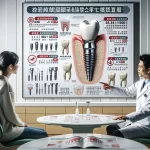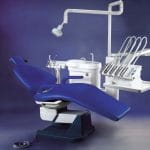Dental implant surgery is a crucial procedure that necessitates diligent post-operative care to promote optimal healing and successful integration of the implants. Proper care significantly affects recovery outcomes and can prevent complications. In this article, we will provide essential diet and exercise tips specifically tailored for your recovery journey after dental implant surgery. These guidelines will help you maintain your health while ensuring that your implants heal properly.
What is Dental Implant Surgery?
Dental implant surgery is an effective treatment designed to replace missing teeth by embedding a durable metal post into the jawbone, acting as a substitute for the natural tooth root. This innovative approach not only restores oral functionality but also enhances the aesthetic appeal of your smile. The process involves several stages, beginning with a thorough evaluation during an initial consultation to determine if dental implants are suitable for you. If necessary, bone grafting may be performed to ensure sufficient jawbone density before surgery.

Following placement, there is a critical recovery phase known as osseointegration, which typically takes several weeks to months. During this time, the implant fuses with the jawbone, creating a stable foundation for the replacement tooth. By addressing both functional and cosmetic concerns, dental implants offer a long-lasting solution for individuals seeking to regain confidence in their oral health.
Immediate Post-Surgery Care: Dietary Tips for the First 24-48 Hours
After surgery, your mouth will be tender, making it essential to avoid foods that could irritate the surgical site. Follow these dietary recommendations for a smoother recovery:
Stick to a Liquid Diet: Opt for cool liquids such as water, flavored water, protein shakes, smoothies, pure fruit or vegetable juices, bone broths, herbal tea, and milkshakes. These options are gentle on the surgical site and provide necessary hydration and nutrients. Aim for at least 60-70 grams of protein daily to support wound healing.
Avoid Using Straws: Suction from straws can disturb the surgical site and potentially cause bleeding.
Stay Hydrated: Drink plenty of fluids to maintain hydration; aim to drink half your body weight in ounces daily unless directed otherwise by your healthcare provider. Steer clear of hot beverages and alcohol that can irritate the area.

Foods to Avoid
Hot Foods and Beverages: These can increase swelling and discomfort, prolonging the healing process.
Carbonated Drinks: The bubbles can irritate the surgical site and cause discomfort.
Spicy and Acidic Foods: These can lead to irritation and delay healing.
In addition to these guidelines, incorporating vitamin-rich foods once cleared by your doctor can further enhance your recovery process by providing essential nutrients that support tissue repair. If you have specific concerns about your diet or recovery process, consult your healthcare provider or a registered dietitian for personalized advice.
Diet Tips for the First Week

Soft Foods to Include
After the initial 24-48 hours, gradually introduce soft foods that require minimal chewing to support healing and provide essential nutrients:
- Smooth Soups and Broths: Ensure they are lukewarm and free of large chunks to avoid irritation.
- Mashed Potatoes and Sweet Potatoes: These are not only easy to eat but also packed with energy and nutrients that aid recovery.
- Scrambled Eggs: A soft, protein-rich option crucial for tissue repair.
- Cooked Vegetables: Steam or boil until tender for easy consumption; these provide vital vitamins like C that promote healing.
- Soft Fish: Varieties like salmon and cod are gentle on the mouth and rich in Omega-3 fatty acids, aiding in inflammation reduction.
Foods to Avoid
To protect the surgical site and ensure proper healing, avoid the following:
- Hard and Crunchy Foods: Examples include nuts, chips, and raw vegetables, which can cause damage.
- Sticky Foods: Items like caramel and taffy may adhere to the implant area, leading to complications.
- Dairy Products: Some experts recommend limiting dairy as it might contribute to inflammation in certain individuals; if you experience discomfort after consuming dairy before surgery, consider avoiding it post-surgery as well.
- Processed Foods and Sugars: These can slow down your recovery by promoting inflammation; focus instead on whole foods that provide essential nutrients.
By following these dietary guidelines, you can promote a smoother recovery process while minimizing discomfort. Remember to stay hydrated as well—adequate fluid intake is crucial during your healing journey.
Exercise Tips After Dental Implant Surgery

Immediate Post-Surgery Exercise
Rest is Crucial: Avoid any strenuous activities for at least 2-3 days post-surgery to prevent increased bleeding and swelling. Engaging in exercise too soon can elevate your heart rate, leading to complications such as excessive bleeding or prolonged discomfort.
Gentle Movements: Light activities like walking are generally safe; however, avoid anything that causes jarring or pressure on the surgical site.
Resuming Exercise
Start Slowly: Gradually reintroduce exercise into your routine. Begin with low-impact activities such as walking or gentle yoga. Monitor your body’s response closely during this period.
Avoid High-Impact Activities: Running, weight lifting, and contact sports should be avoided for at least a week or until your dentist gives you the green light. Prematurely returning to these activities can hinder healing and increase pain.
Swimming: This can be a good low-impact exercise; however, be cautious in crowded pools to avoid accidental impacts that could disrupt healing.
Long-Term Exercise Considerations
Listen to Your Body: Pay attention to any signs of discomfort or swelling and adjust your activities accordingly. If you experience any unusual symptoms such as excessive bleeding or worsening swelling after resuming exercise, consult your dentist immediately.
Consult Your Dentist: Always check with your dentist before resuming any strenuous activities to ensure your implant is healing properly. Individual factors such as the complexity of your procedure may necessitate a longer recovery period.
Additional Tips
Hydration and Nutrition: Staying hydrated and maintaining a balanced diet rich in vitamins can support healing.
Mindful Breathing: Incorporate breathing exercises to reduce stress during your recovery process.
By following these guidelines, you can safely resume your exercise routine while ensuring optimal recovery from dental implant surgery. Always prioritize your health and consult your dentist if you have any concerns about your recovery process.
Conclusion
Proper care after dental implant surgery is essential for a successful recovery. By following these diet and exercise tips, you can help ensure that your implants heal correctly and integrate well with your jawbone. Remember to stay hydrated, eat soft and nutritious foods, and gradually reintroduce exercise into your routine. Always consult with your dentist for personalized advice and follow their recommendations closely.
After dental implant surgery, pain can be managed with prescribed painkillers and by applying a cold pack to the affected area. Always follow your dentist’s instructions for pain management.
Common complications can include infection, nerve damage, and implant failure. If you experience severe pain, swelling, or discomfort, contact your dentist immediately.
Recovery time varies for each individual, but typically, it takes a few weeks to several months for the implant to fully integrate with the bone.
After surgery, stick to soft foods and liquids to avoid disturbing the implant site. Gradually reintroduce harder foods as your mouth heals and always avoid very hot or cold foods.
Avoid strenuous exercise for the first few days after surgery as it can lead to increased bleeding or swelling. Gradually reintroduce exercise as your body recovers, but always listen to your body and rest if needed.







